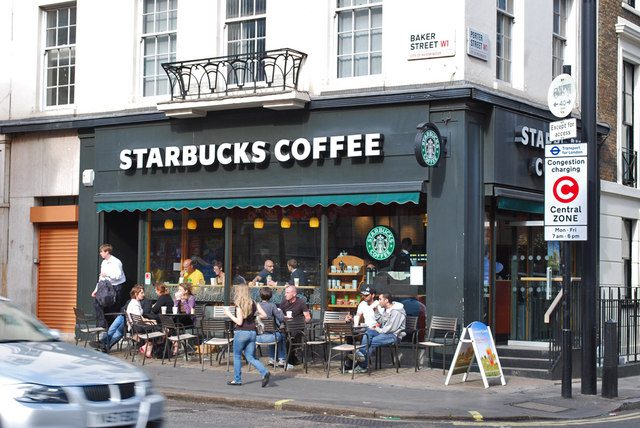Ich bin viel gereist, das macht einen großen Teil meiner Rolle hier bei Millennium aus.
Jedes Jahr reise ich in verschiedene Länder auf der ganzen Welt und besuche unsere Kunden, Teammitglieder und Speditionspartner. Ich liebe das Reisen. Neue Leute kennenlernen, andere Kulturen kennenlernen und neue Orte erkunden. Und ich liebe es, dass kein Land dem anderen gleicht.
Aber eines hat mich früher immer überrascht. Egal wohin ich ging, von China und Singapur nach Katar, in die Niederlande oder nach Belgien. Jeder einzelne hatte einen Starbucks. Nun, ich bin kein großer Kaffeetrinker – ich trinke lieber ein Bier in der örtlichen Kneipe, während ich Fußball schaue. Aber diese weltweite Vorherrschaft erregte meine Aufmerksamkeit. Wie hat Starbucks es geschafft, etwas so Massenware und Grundlegendes wie Kaffee zu einer so starken weltweiten Marke zu machen?
Starbucks begann als kleines Kaffeeunternehmen mit einigen Cafés in Seattle, USA. Aber Howard Schultz dachte, es könnte noch viel mehr sein. Nachdem er einige Zeit in Italien verbracht hatte, bemerkte er, dass Coffeeshops nicht nur Orte waren, an denen man schnell einen Kaffee kaufen konnte, sondern vielmehr ein sozialer Treffpunkt. Die Leute kamen wegen des Erlebnisses, nicht nur wegen des Kaffees. Er teilte seine Ideen mit den Besitzern von Starbucks, aber sie wurden nicht verkauft. Einige Jahre vergingen, Howard gründete seine eigenen Coffeeshops, Il Giornale, bevor er 1987 zu Starbucks zurückkehrte und die Marke für 3,8 Millionen Dollar kaufte. In den kommenden Jahren arbeitete Howard hart daran, das Starbucks aufzubauen, das viele von uns heute kennen und lieben. Indem er sich auf das Kundenerlebnis und nicht nur auf das Produkt konzentrierte, konnte er einen Ort schaffen, an dem die Menschen nicht nur guten Kaffee, sondern auch gute Menschen, Komfort und eine Gemeinschaft genießen konnten. Dieser erlebnisorientierte Ansatz zog nicht nur mehr Menschen an in die Läden, erlaubte Howard aber, einen Premiumpreis für etwas zu verlangen, das ansonsten eine Ware war – ich meine, wer hätte gedacht, dass man für eine Tasse Kaffee mehr als 5 Pfund verlangen könnte?
Ein paar Jahrzehnte später ist Starbucks nicht nur ein bekannter Name, sondern verfügt auch über Cafés in 86 Ländern auf der ganzen Welt und eine fast kultartige Fangemeinde. Warum erzähle ich dir das? Nun, im Güterverkehr und für viele von Ihnen, die dies lesen und in anderen Branchen tätig sind, ist unser Service auch ein wenig standardisiert. Jeder möchte die günstigste Option, wenn es darum geht, seine Waren rund um die Welt zu transportieren. Aber bei Millennium haben wir unsere Marke ein wenig wie Starbucks aufgebaut – auf Kundenservice und Erfahrung. Ja, wir finden für Sie die günstigsten Frachtraten und die besten Routen. Aber wir bieten Ihnen auch ein gutes Kundenerlebnis, einen persönlichen Service und bauen eine Beziehung zu Ihnen auf, die sicherstellt, dass Sie immer die besten Lösungen für Ihre individuellen Bedürfnisse erhalten. Wir sind vielleicht nicht so groß wie Starbucks, aber dieser erlebnisorientierte Ansatz hat es uns ermöglicht, in einem hart umkämpften Markt mit den Großen zu konkurrieren. Sie können auch von Starbucks (und Millennium!) lernen.
Kämpfen Sie um Aufmerksamkeit in einem standardisierten Markt? Konkurrieren Sie ständig über den Preis? Wie könnten Sie Ihr Angebot ändern, um ein stärker erlebnisorientiertes Angebot zu schaffen?
Denken Sie darüber nach und lassen Sie es mich wissen ... Ich würde gerne Ihre Ideen hören ...

